Grow Potatoes Fast and Easy? Absolutely! Imagine harvesting a bounty of fresh, earthy potatoes from your own backyard, sooner than you ever thought possible. Forget those long waits and uncertain yields – I’m about to share some game-changing DIY tricks that will have you enjoying homegrown potatoes in record time.
Potatoes have been a staple food for centuries, with a rich history spanning continents. From their humble beginnings in the Andes Mountains to becoming a global culinary icon, potatoes have nourished generations. But let’s be honest, sometimes the traditional growing process can feel a bit… slow. That’s where these clever hacks come in!
In today’s busy world, who has time to wait months for a single harvest? These DIY tricks are designed to help you grow potatoes fast and easy, even if you have limited space or gardening experience. Whether you’re a seasoned gardener or a complete beginner, you’ll find these tips incredibly helpful. I’ll show you how to optimize your soil, choose the right varieties, and implement simple techniques that will dramatically accelerate your potato growth. Get ready to impress your friends and family with your impressive potato-growing skills – and enjoy delicious, homegrown potatoes sooner than you ever thought possible!
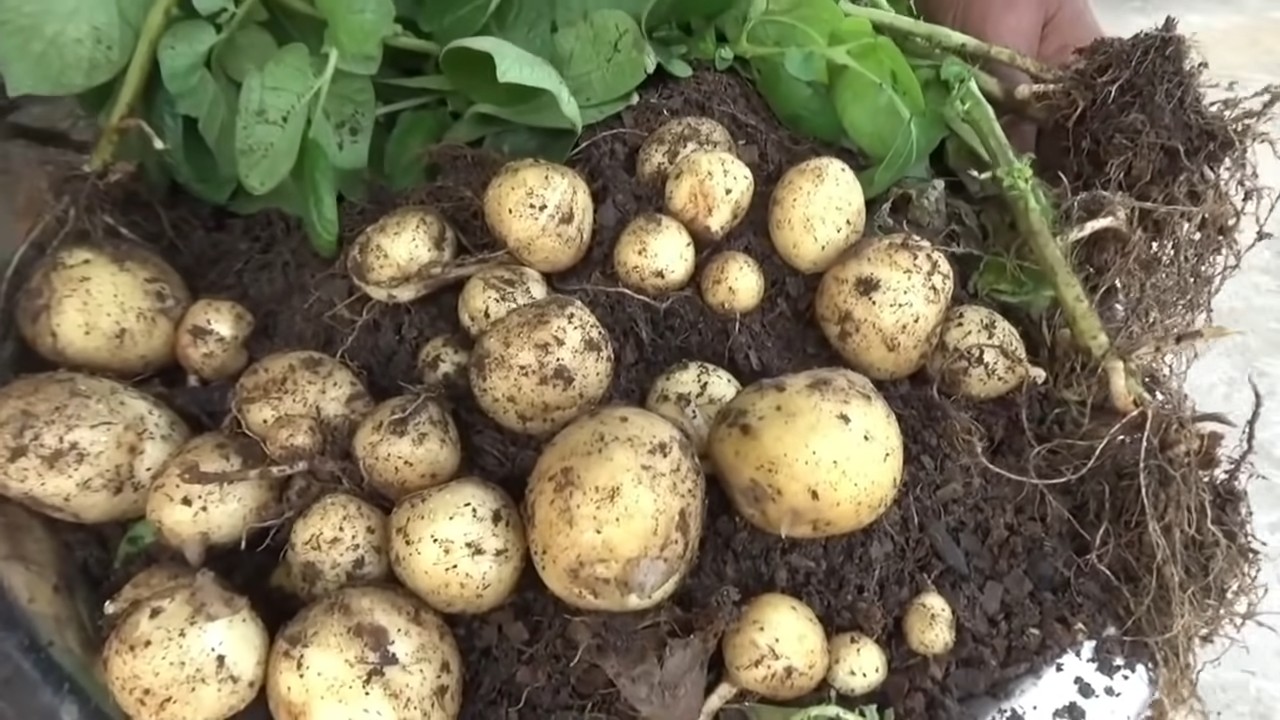
Grow Potatoes Fast and Easy: The No-Dig Method!
Hey there, fellow gardening enthusiasts! I’m so excited to share my favorite way to grow potatoes – the no-dig method! Forget back-breaking tilling and endless weeding. This method is easy, efficient, and yields a fantastic harvest. Plus, it’s perfect for small spaces or even just a sunny corner of your yard. Let’s get started!
What You’ll Need
Before we dive in, let’s gather our supplies. This is a pretty low-cost project, which is always a win in my book!
* Seed Potatoes: These are potatoes specifically grown for planting. You can find them at your local garden center or online. Choose certified disease-free varieties for the best results. I personally love Yukon Gold for their creamy texture and reliable yields.
* Straw or Hay: This is the key to the no-dig method! Straw or hay provides a fluffy, insulating layer that keeps the soil moist and weed-free. Make sure it’s clean and free of seeds.
* Compost or Well-Rotted Manure: This will provide essential nutrients for your growing potatoes. I prefer using my own homemade compost, but store-bought works just as well.
* Optional: Chicken wire or hardware cloth (to protect from rodents), fertilizer formulated for potatoes.
* Watering Can or Hose: Essential for keeping your potato plants hydrated.
* Gardening Gloves: To keep your hands clean and protected.
* Shovel or Trowel: For initial planting.
Choosing the Right Location
Potatoes need at least 6-8 hours of sunlight per day, so pick a sunny spot in your garden. Good drainage is also important. If your soil is heavy clay, consider amending it with compost or other organic matter to improve drainage.
Planting Your Seed Potatoes
Okay, let’s get our hands dirty! This is the fun part.
1. Prepare the Ground: Even though it’s a “no-dig” method, we still need to prep the ground a little. Clear the area of any grass, weeds, or debris. I like to lay down a layer of cardboard to suppress weeds even further. This will decompose over time and add organic matter to the soil.
2. Lay Down a Base Layer of Compost: Spread a 2-3 inch layer of compost or well-rotted manure over the prepared ground. This will provide a nutrient-rich foundation for your potatoes.
3. Cut Your Seed Potatoes (Optional): If your seed potatoes are large (bigger than an egg), you can cut them into smaller pieces. Each piece should have at least 2-3 “eyes” (those little buds that will sprout). Let the cut pieces dry for a day or two to callous over. This helps prevent rot. If your seed potatoes are small, you can plant them whole.
4. Plant the Seed Potatoes: Place the seed potatoes on top of the compost layer, spacing them about 12 inches apart. Make sure the “eyes” are facing upwards.
5. Cover with Straw: Now comes the magic! Cover the seed potatoes with a thick layer of straw or hay, about 8-12 inches deep. This is what will keep the soil moist, suppress weeds, and provide a loose, airy environment for the potatoes to grow.
Hilling and Watering
“Hilling” is the process of adding more straw or soil around the potato plants as they grow. This encourages more potato production along the stems.
1. Water Regularly: Keep the straw moist, but not soggy. Water deeply whenever the top inch or two of straw feels dry. Potatoes need consistent moisture, especially during flowering and tuber formation.
2. Hill as Needed: As the potato plants grow, they’ll start to poke through the straw. When the plants are about 6-8 inches tall, add another layer of straw around the base of the plants, leaving the top few inches exposed. Repeat this process every few weeks as the plants continue to grow. This encourages the plants to produce more potatoes along the buried stems.
3. Fertilize (Optional): If you want to give your potatoes an extra boost, you can fertilize them with a fertilizer specifically formulated for potatoes. Follow the instructions on the fertilizer package. I usually side-dress with a balanced organic fertilizer a few weeks after the plants emerge.
Dealing with Pests and Diseases
Potatoes can be susceptible to a few pests and diseases, but with a little vigilance, you can keep your plants healthy.
* Colorado Potato Beetles: These pesky beetles can defoliate your potato plants. Hand-picking them off the plants is the most effective way to control them. You can also use an organic insecticide like neem oil.
* Potato Blight: This fungal disease can cause brown spots on the leaves and stems. To prevent blight, choose disease-resistant varieties and ensure good air circulation around your plants. If you see signs of blight, remove the affected leaves immediately.
* Rodents: Mice and voles sometimes like to snack on potatoes. If you have a rodent problem, consider surrounding your potato patch with chicken wire or hardware cloth.
Harvesting Your Potatoes
This is the moment we’ve all been waiting for! Harvesting your potatoes is like a treasure hunt.
1. When to Harvest: You can start harvesting “new potatoes” (small, tender potatoes) about 2-3 weeks after the plants flower. For mature potatoes, wait until the plants start to die back and the foliage turns yellow or brown. This usually happens about 80-100 days after planting.
2. Harvesting: Gently pull back the straw and dig around the base of the plants with your hands or a garden fork. Be careful not to damage the potatoes. You’ll be amazed at how many potatoes are hiding under that straw!
3. Curing: After harvesting, let the potatoes dry in a cool, dark, well-ventilated place for a week or two. This will help them develop a thicker skin and improve their storage life.
4. Storing: Store your cured potatoes in a cool, dark, dry place, such as a root cellar or basement. They should last for several months.
Troubleshooting
Sometimes things don’t go exactly as planned. Here are a few common problems and how to fix them:
* No Potatoes: If your plants are growing well but you’re not getting any potatoes, it could be due to a lack of sunlight, poor soil, or insufficient watering. Make sure your plants are getting enough sunlight and water, and consider adding some fertilizer to the soil.
* Small Potatoes: Small potatoes can be caused by overcrowding, lack of nutrients, or early harvesting. Make sure you’re spacing your seed potatoes properly and fertilizing regularly.
* Green Potatoes: Green potatoes have been exposed to sunlight and contain a toxin called solanine. Don’t eat green potatoes! They can cause stomach upset. To prevent greening, make sure your potatoes are well-covered with straw or soil.
Why I Love This Method
I’ve tried several different ways to grow potatoes, and the no-dig method is by far my favorite. Here’s why:
* Easy: It’s so much easier than tilling and digging.
* Weed-Free: The straw smothers weeds, so you don’t have to spend hours weeding.
* Water-Efficient: The straw helps retain moisture, so you don’t have to water as often.
* Great Yields: I consistently get a great harvest of potatoes using this method.
* Good for the Soil: The straw and compost improve the soil structure and fertility.
Experiment and Have Fun!
Don’t be afraid to experiment with different varieties of potatoes and different types of straw or hay. Gardening is all about learning and having fun. I hope you enjoy growing your own potatoes as much as I do! Happy gardening!
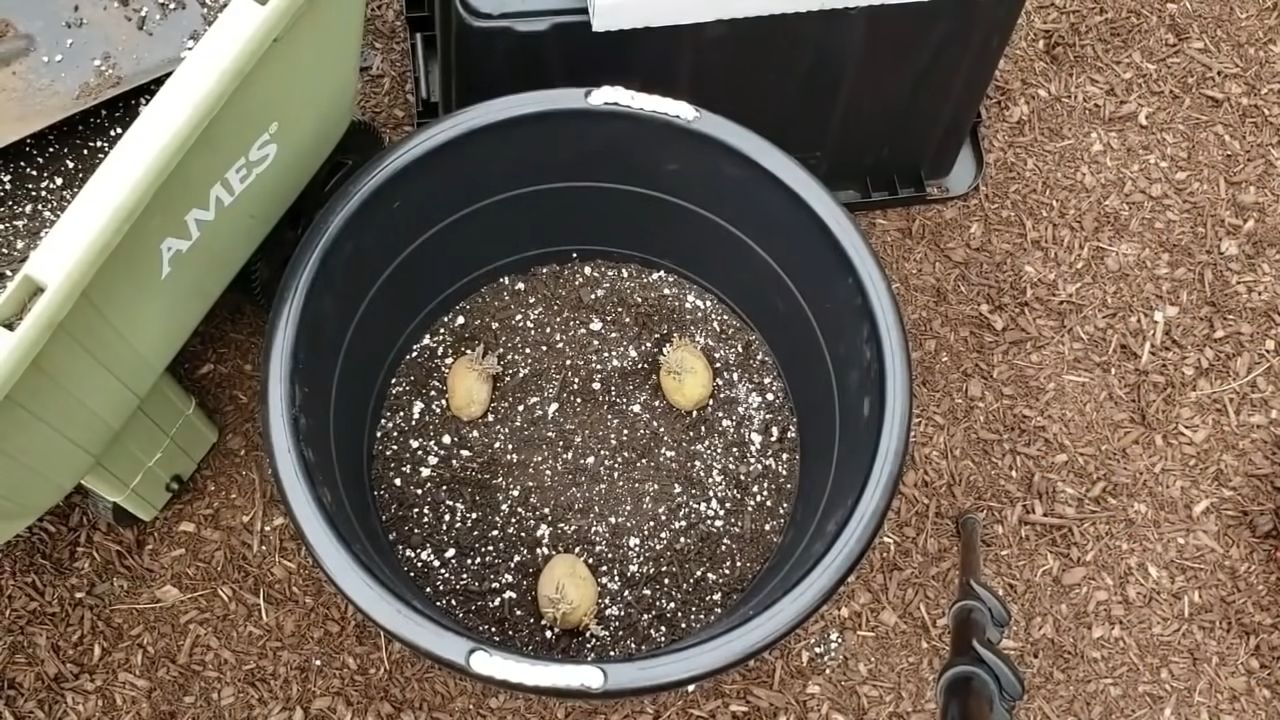
Conclusion
So, there you have it! Growing potatoes fast and easy is not just a pipe dream; it’s an achievable reality with this simple, yet effective DIY trick. We’ve walked you through the process, highlighting the benefits of starting with chitted seed potatoes and utilizing the “potato tower” or container gardening method. But why is this a must-try?
Firstly, it significantly accelerates the potato growing process. By pre-sprouting your seed potatoes, you’re giving them a head start, allowing them to establish roots and foliage much quicker than if planted directly into the ground. This means you could be enjoying freshly harvested potatoes weeks, even months, earlier than your neighbors!
Secondly, this method is incredibly space-efficient. Whether you have a sprawling garden or just a small balcony, container gardening allows you to grow a substantial amount of potatoes in a limited area. The “potato tower” technique, in particular, maximizes vertical space, enabling you to harvest a surprisingly large yield from a relatively small footprint.
Thirdly, it offers greater control over the growing environment. You can easily monitor and adjust soil moisture, nutrient levels, and pest control, leading to healthier plants and a more bountiful harvest. No more battling unpredictable weather or soil conditions!
But the beauty of this DIY trick lies in its adaptability. Feel free to experiment with different potato varieties. Russets, Yukon Golds, red potatoes – the choice is yours! Each variety offers a unique flavor and texture, allowing you to tailor your harvest to your specific culinary preferences.
Consider adding companion plants to your potato containers. Marigolds can help deter pests, while basil can improve the overall health of your potato plants. Don’t be afraid to get creative and personalize your growing setup.
For those living in colder climates, you can even extend the growing season by starting your seed potatoes indoors and moving them outdoors once the weather warms up. This allows you to enjoy a continuous supply of fresh potatoes throughout the year.
And for those with limited mobility, container gardening offers a more accessible way to grow potatoes. No more bending or kneeling for extended periods! You can easily tend to your potato plants from a comfortable position.
Ultimately, this DIY trick is about empowering you to grow your own food, connect with nature, and enjoy the satisfaction of harvesting your own delicious potatoes. It’s a rewarding experience that’s both educational and enjoyable.
So, what are you waiting for? Gather your supplies, follow our simple steps, and embark on your potato-growing adventure today! We’re confident that you’ll be amazed by the results.
Don’t forget to share your experiences with us! We’d love to see your potato towers, hear about your successes (and challenges!), and learn from your unique growing techniques. Share your photos and stories on social media using #GrowPotatoesFastEasy and join our community of passionate potato growers. Let’s inspire each other to cultivate a more sustainable and delicious future, one potato at a time. This **grow potatoes fast and easy** method is a game changer!
Frequently Asked Questions
What exactly are “chitted” seed potatoes, and why are they important?
Chitting, also known as pre-sprouting, is the process of encouraging seed potatoes to develop sprouts before planting. This gives them a significant head start, allowing them to establish roots and foliage much faster once planted. To chit your seed potatoes, simply place them in a cool, bright location (but not direct sunlight) for a few weeks, allowing them to develop short, green sprouts. These sprouts are a sign that the potato is ready to grow and will result in earlier and more abundant harvests. Think of it as giving your potatoes a jumpstart on the growing season. It’s a crucial step in the **grow potatoes fast and easy** process.
What type of container is best for growing potatoes?
The ideal container for growing potatoes should be large enough to accommodate the growing root system and allow for hilling (adding more soil as the plant grows). A container that is at least 20 gallons in size and 18 inches deep is generally recommended. You can use plastic pots, fabric grow bags, or even repurposed containers like old trash cans or barrels. Make sure the container has drainage holes to prevent waterlogging, which can lead to root rot. Potato grow bags are particularly popular because they allow for easy harvesting – you can simply open the side of the bag to retrieve your potatoes without disturbing the entire plant.
What kind of soil should I use for growing potatoes in containers?
Potatoes thrive in well-draining, slightly acidic soil. A good potting mix for potatoes should be loose and airy, allowing for good root development. You can create your own mix by combining equal parts of compost, peat moss (or coconut coir), and perlite or vermiculite. Avoid using garden soil, as it can be too heavy and compact, hindering drainage and root growth. Adding some slow-release fertilizer to the soil mix can also provide your potato plants with the nutrients they need throughout the growing season.
How often should I water my potato plants in containers?
Watering frequency will depend on the weather conditions and the type of container you are using. Generally, you should water your potato plants when the top inch of soil feels dry to the touch. Avoid overwatering, as this can lead to root rot. During hot, dry weather, you may need to water your plants daily. In cooler, wetter weather, you may only need to water them every few days. The key is to monitor the soil moisture and adjust your watering schedule accordingly.
How do I “hill” my potato plants, and why is it important?
Hilling is the process of adding more soil around the stems of your potato plants as they grow. This encourages the plants to produce more potatoes along the buried stems. As the potato plant grows taller, gradually add more soil to the container, burying the lower portion of the stem. Leave only the top few sets of leaves exposed. Repeat this process every few weeks until the container is full. Hilling is essential for maximizing your potato yield, as it provides more opportunities for the plants to produce tubers.
What are some common pests and diseases that affect potato plants, and how can I prevent them?
Common pests that can affect potato plants include aphids, potato beetles, and flea beetles. Diseases include early blight, late blight, and potato scab. To prevent these problems, start with healthy seed potatoes, practice good sanitation (remove any dead or diseased foliage), and monitor your plants regularly for signs of pests or diseases. You can use organic pest control methods, such as insecticidal soap or neem oil, to control pests. To prevent diseases, ensure good air circulation around your plants and avoid overwatering. Crop rotation can also help to prevent soilborne diseases.
When and how do I harvest my potatoes?
The timing of your potato harvest will depend on the variety of potato you are growing and your personal preferences. “New” potatoes can be harvested as early as 60-70 days after planting, while mature potatoes typically take 80-100 days. To harvest new potatoes, gently dig around the base of the plant and remove a few potatoes, leaving the rest to continue growing. To harvest mature potatoes, wait until the foliage starts to die back. Then, carefully dig up the entire plant and remove the potatoes. Allow the potatoes to dry in a cool, dark place for a few days before storing them.
Can I grow potatoes in containers indoors?
While it is possible to grow potatoes in containers indoors, it can be challenging to provide them with the necessary light and temperature conditions. Potatoes need at least 6-8 hours of direct sunlight per day to thrive. If you don’t have a sunny window, you may need to supplement with grow lights. You also need to ensure that the temperature is consistently warm, around 60-70 degrees Fahrenheit. Indoor potato plants may also be more susceptible to pests and diseases. For best results, it is generally recommended to grow potatoes outdoors in containers.
What can I do with my potato harvest?
The possibilities are endless! You can boil, bake, fry, mash, or roast your potatoes. You can use them in soups, stews, salads, or side dishes. You can even make your own potato chips or fries. Freshly harvested potatoes have a unique flavor and texture that is far superior to store-bought potatoes. Enjoy the fruits (or rather, tubers) of your labor!

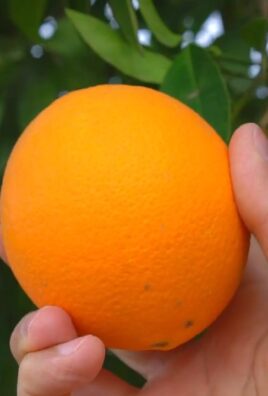
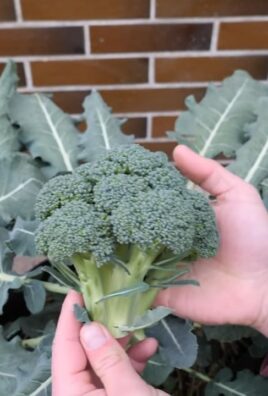
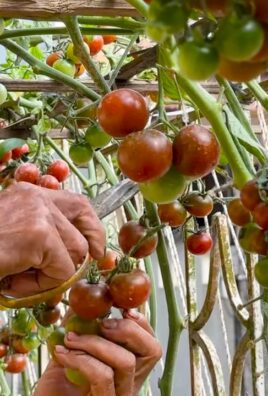
Leave a Comment